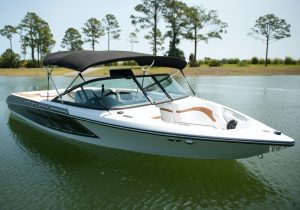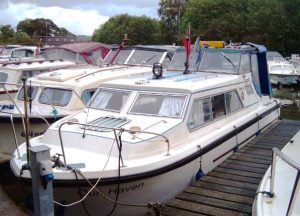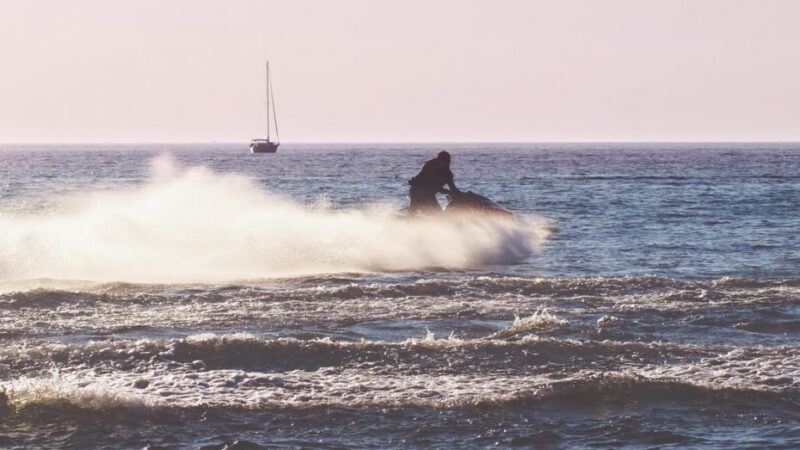Last week as I was skimming through social media, I stumbled across a news article from hccommunityjournal.com dated Sept. 15 on a very tragic and unimaginable situation in which a 9-year-old boy lost his life while water skiing with his family.
As it turns out, Andrew Brady (Free) died on June 6, and his mother, Cassandra Free, opted to share the results of her son’s autopsy to prevent any future tragedies from occurring. She shared her story with friends via Facebook, asking people to make this go viral. So I have decided to do my part to make that happen, because as a safety and risk management professional, I’m always trying to identify obvious and not-so-obvious hazards and risks.
The mother went on to say that, “this is one of the hardest posts I will ever have to write, but this information needs to be shared. Most people don’t really know what happened and we haven’t been fully willing to publicly share until we had autopsy answers.”
She stated that the “The news outlets said that he fell off the dock and drowned. We did not dispute this without having our own concrete evidence, but we knew this wasn’t what happened. He wasn’t on the dock. His brothers were treated that night at St. Francis for ‘Acute Carbon Monoxide poisoning.’ Andrew has been swimming since he was two years old – he was a STRONG swimmer – and yet he didn’t even struggle.”
“Now we know why. His COHb (carboxyhemoglobin levels ) was 72 percent. His so-called ‘drowning’ was secondary to the fact that he never would have lived at that level. What does that mean? It means Andrew was not going to live regardless of what happened next. He was at the back of our Malibu Skier most of the day. Boats, even moving, create a backdraft of exhaust. That’s right. Exactly what I’ve typed: carbon monoxide exits the rear of the boat and drafts right back into the back of the boat. Backseat riders are especially vulnerable at low speeds and in long no-wake zones like the one we had to cross to return to the docks.”
The fact is carbon monoxide is a colorless, odorless, tasteless, and a very deadly gas that has been proven to be deadly even on and near boats. Often early symptoms of CO poisoning can be confused with seasickness or intoxication, therefore those affected may not get needed medical attention.
Carbon monoxide (CO) sources on a boat may include engines, gas generators, cooking ranges, and space and water heaters. CO can accumulate anywhere in or around a boat, including on back decks, swim platforms, or in the water around generator exhausts. The fact is CO can remain in or around one’s boat at dangerous levels even if the engine or one nearby is no longer running.
According to his mother, Andrew died from what some experts “open-air carbon monoxide poisoning.” Traveling at slow speeds or idling in the water can cause CO to build up in a boat’s cabin, cockpit, bridge, and aft deck, or in an open area. Wind from the aft section of the boat can increase this buildup of CO.
In a boating situation back drafting can cause CO to build up inside the cabin, cockpit, and bridge when a boat is operated at a high bow angle, is improperly or heavily loaded, or has an opening that draws in the exhaust.
Open-air carbon monoxide poisoning is an unusual manner of carbon monoxide poisoning, that can claim the lives of unsuspecting people even in outdoor settings. In a medical study published by www.pubmed.com, they claim that a young man was four-wheeling in a swampy area when his jeep became stuck in the mud as he continued to floor the accelerator. Carbon monoxide fumes entered the vehicle through the rusted floorboards, killing the driver.
In the second case, two teens were skinny dipping behind a motorboat when they became affected by the boat exhaust. One of the youths was overcome and submerged into the lake. Both incidents were initially attributed to incorrect causes — a car accident and a drowning — because of the false notion that carbon monoxide is not a hazard in a ventilated area. It was only through laboratory testing that carbon monoxide poisoning was identified as the cause of their demise.
Cassandra went on to say that Andrew… “was probably slowly dying that afternoon/evening and we didn’t know it. He would’ve been tired. His head would’ve started to hurt. Sounds like too much sun after a long, physically draining day of wakeboarding, wake surfing, and tubing.
“Andrew later crawled up onto the back edge of the boat while we were packing up at the dock and became unconscious and unaware of his impending death.”
The mother at the time had no idea anything unusual was taking place and if he had not fallen over, he likely would’ve passed away in his sleep on the way home. Even if he would’ve gone immediately to the ER at that time, he still would’ve died because of the deadly COHb levels that he had inhaled while on the boat and in and around the boat.
The fact of the matter is that many CO deaths on boats are likely to go unreported or misclassified under different causes of death if CO poisoning is not suspected.
People are dying from CO poisoning more frequently on a boat than you would think. In fact, in New York just last week, a 34-year-old woman has died and a Syracuse police officer is in critical condition in what state police said was a possible case of carbon monoxide poisoning aboard a boat in Sylvan Beach, N.Y.
The federal government has been aware of this exposure for several years. In fact, in August 2000, the National Park Service, through the Department of the Interior, requested assistance from the National Institute for Occupational Safety and Health (NIOSH) and the U.S. Coast Guard to evaluate visitor and employee carbon monoxide (CO) exposures from generators and propulsion engines on houseboats.
 Keven Moore works in risk management services. He has a bachelor’s degree from the University of Kentucky, a master’s from Eastern Kentucky University and 25-plus years of experience in the safety and insurance profession. He is also an expert witness. He lives in Lexington with his family and works out of both Lexington and Northern Kentucky. Keven can be reached at kmoore@roeding.com
Keven Moore works in risk management services. He has a bachelor’s degree from the University of Kentucky, a master’s from Eastern Kentucky University and 25-plus years of experience in the safety and insurance profession. He is also an expert witness. He lives in Lexington with his family and works out of both Lexington and Northern Kentucky. Keven can be reached at kmoore@roeding.comThis initial investigation characterized CO poisonings through epidemiologic data gathering and the measurement of severely hazardous CO concentrations on houseboats at Lake Powell. Since that initial investigation, over 800 boating-related poisonings in 35 states have been identified with over 140 of these poisonings resulting in death. More than 300 of the poisonings occurred on houseboats, with more than 200 of these poisonings attributed to generator exhaust alone.
As of today, there are no guidelines or requirements for boating manufacturers to issue warnings, labels, or notification of this potentially deadly exposure. Older boats are more at risk for producing CO as manufactures have tried to make modifications to the newer models. As for boat owners, they are not required to have their boats exhaust system inspected.
In essence as a boater, your health and safety of passengers fall upon you, and you need to know “How to Prevent CO Poisoning on Boats.” Here are a few tips:
• Install and maintain a working CO detector listed by Underwriters’ Laboratories (UL) as appropriate for marine use inside the boat.
• Properly install and maintain all fuel-burning engines and appliances.
• Educate all passengers about the signs and symptoms of CO poisoning.
• Swim and play away from areas where engines vent their exhaust.
• Watch children closely when they play on rear swim decks or water platforms.
• Never block exhaust outlets. Blocking outlets can cause CO to build up in the cabin and cockpit areas–even when hatches, windows, portholes, and doors are closed.
• Dock, beach, or anchor at least 20 feet away from the nearest boat that is running a generator or engine. Exhaust from a nearby vessel can send CO into the cabin and cockpit of a boat.
• If you think a person on your boat has CO poisoning move him or her to fresh air right away and contact the nearest emergency services.
Be safe, my friends.







Recent Comments